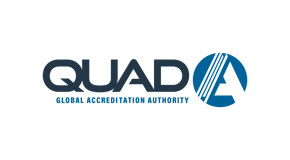Hand hygiene is a critical component of infection prevention and control within any healthcare setting, particularly in surgical facilities where the risks of surgical site infections (SSIs) loom large. SSIs can have devastating consequences for patients and pose significant challenges for healthcare providers.
QUAD A standard 7-B-1 states: Hand hygiene is performed in accordance with current nationally recognized and/or WHO guidelines and standards of practice. Periodic hand hygiene auditing must be a part of the facility's quality activities. For surgical/procedural facilities: Scrub facilities are provided for the operating room staff. Scrub products (as appropriate), soap, and alcohol cleansers are provided for the operating room staff, consistent with current adopted guidelines and standards of practice for hand hygiene.
A hand hygiene audit in a surgical facility is not merely an administrative exercise, but a vital process aimed at ensuring compliance with best practices and enhancing patient safety. The primary goal of the hand hygiene audit is to evaluate adherence to recommended hand hygiene protocols and identify areas for improvement. Typically, these audits involve direct observation of staff members, assessing the frequency of hand washing or sanitization before and after patient interactions, and following other defined protocols.
A well-designed hand hygiene audit includes several key components.
- Selecting the audit team:
- Usually consists of infection control practitioners and clinical staff.
- Tasked with being both thorough and objective, ensuring that evaluations reflect actual practice without bias.
- Establishing clear criteria for what constitutes satisfactory hand hygiene practices:
- Review guidelines from authoritative bodies such as the World Health Organization (WHO) and the Centers for Disease Control and Prevention (CDC).
- Observing hand hygiene practices by monitoring a sample of healthcare workers over a specified period:
- Gather enough data to draw meaningful conclusions while remaining aware of the need for diverse observation settings—such as operating rooms, recovery areas, and pre-operative holding areas.
- Observe a variety of staff members, including surgeons, nurses, and support personnel.
- Survey or interview staff for perception and attitudes towards hand hygiene.
- Understand the barriers that staff face in maintaining compliance, whether it’s a lack of awareness, time constraints, or insufficient resources.
- Documenting the observations:
- Note the technique used, the preparation or product in use, and compliance rates relative to different types of procedures.
- Note the adherence rate before surgeries compared to after surgical procedures.
- Note any difference in compliance among different teams.
- Analyzing the data:
- Translate raw observation numbers into actionable information.
- Calculate compliance rates compared to established benchmarks.
- Don’t settle for 90% compliance; strive for 100%!
- Devising an action plan:
- Address the specific areas of non-compliance identified.
- Introduce attainable and sustainable solutions.
- For example, if certain surgical teams struggle with hand hygiene during high-pressure moments, initiatives such as providing additional training or reinforcing the importance of hand hygiene through reminders may be helpful. Placing posters near sinks or hand sanitizer stations can serve as prompts for proper handwashing behaviors.
- For example, if certain surgical teams struggle with hand hygiene during high-pressure moments, initiatives such as providing additional training or reinforcing the importance of hand hygiene through reminders may be helpful. Placing posters near sinks or hand sanitizer stations can serve as prompts for proper handwashing behaviors.
- Sharing results with staff:
- Create a culture of transparency.
- Emphasize the importance of teamwork in achieving infection prevention goals.
- Engage staff in a way that promotes accountability and helps cultivate a sense of ownership.
- Supporting administrative changes:
- Allocate resources if necessary.
- Update hand sanitation equipment if needed or provide ongoing education programs.
- Communicating the prioritization of hand hygiene within the overall culture is pertinent.
- Allocate resources if necessary.
- Reassessing through follow-up audits:
- Conduct months after the implementation of the action plan to evaluate the effectiveness of changes made.
- Provide further opportunities for continuous improvement.
- Regular audits also help to sustain a culture of accountability and keep hand hygiene at the forefront of staff training and awareness.
- Maintaining documentation:
- Retain data and documentation for compliance purposes, trending, and future reference.
In conclusion, a hand hygiene audit in a surgical facility is a powerful tool for enhancing patient safety and minimizing the risk of infections. When conducted meticulously and followed by clear action plans and staff engagement, these audits create a framework for continuous improvement that ultimately affects patient outcomes positively. Investing in hand hygiene is not just a regulatory requirement; it is a commitment to excellence in patient care that every surgical facility should uphold. Emphasizing the culture of safety and accountability among all facility staff will lead to healthier surgical outcomes and improved patient trust in healthcare systems.
Since 1980, QUAD A (a non-profit, physician-founded and led global accreditation organization) has worked with thousands of healthcare facilities to standardize and improve the quality of healthcare they provide – believing that patient safety should always come first.


